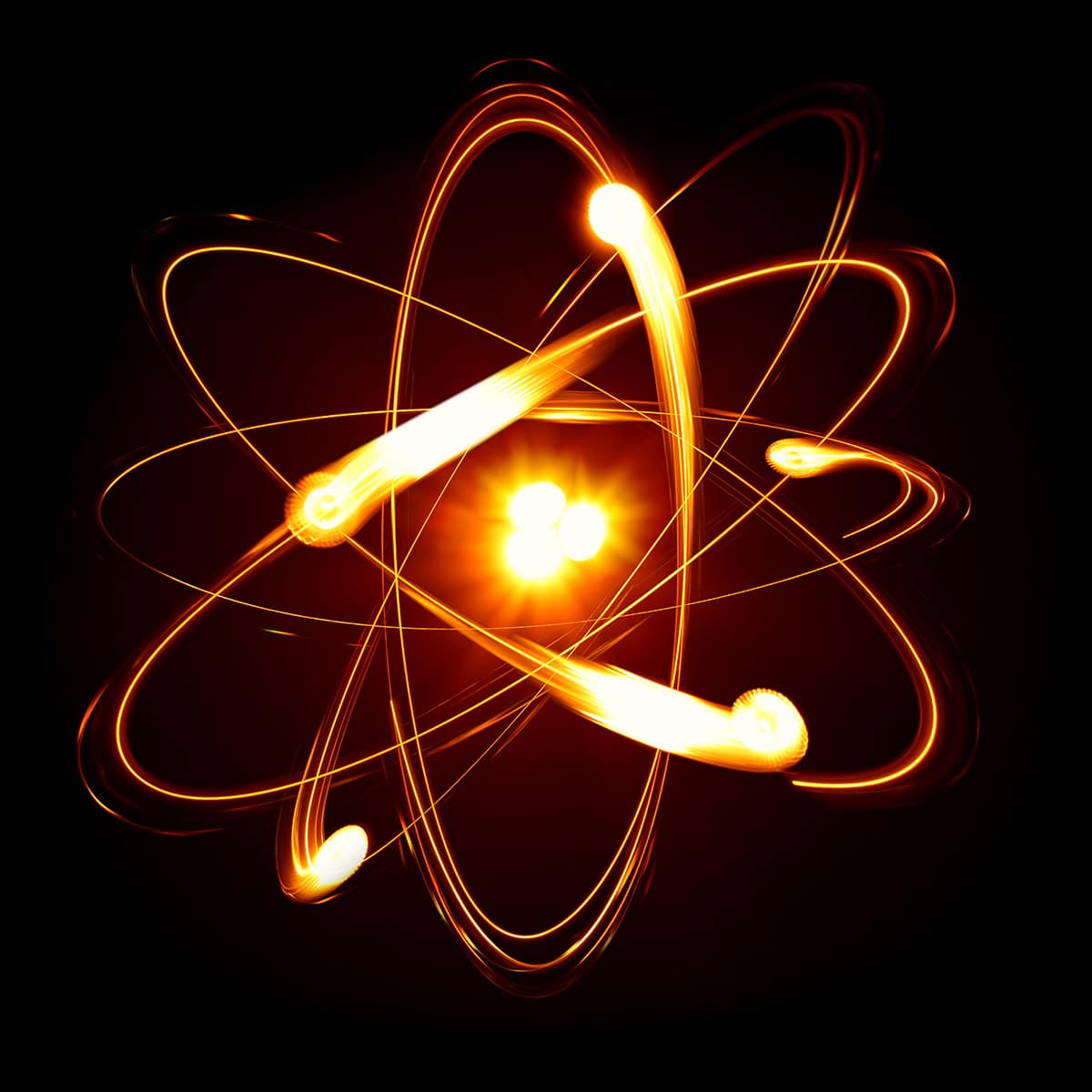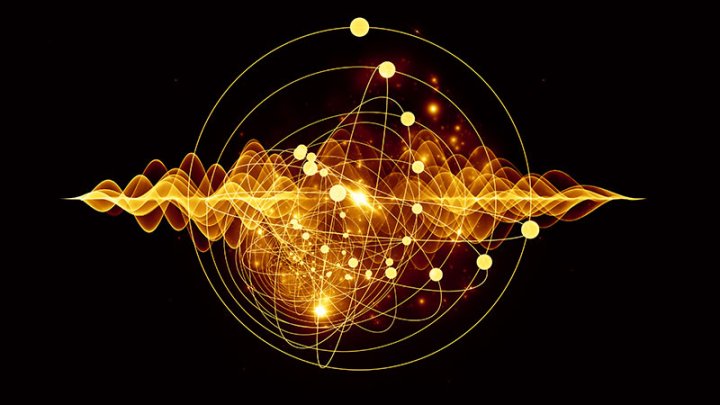The Quantum Model of the Atom: Beyond Bohrs Orbits
Published:
Every material object in the universe is fundamentally a combination of atoms. While we often think of atoms as simple, indivisible particles, the reality is far more complex. The journey to understanding the atom has been a long one, marked by groundbreaking discoveries that challenged our very notion of what matter is. The quantum model of the atom stands as our most accurate and sophisticated description to date, explaining the mysterious behavior of electrons that a simpler model like Bohr’s could not.
The Bohr Model: A Stepping Stone to Quantum Mechanics
For a time, the Bohr model provided a significant leap forward in understanding atomic structure. It proposed that an atom consists of a dense, central nucleus containing protons and neutrons, orbited by electrons in fixed, circular paths or shells.
Key Postulates of the Bohr Model
- Quantized Orbits: Electrons can only exist in specific, discrete energy levels, or shells. These shells are labeled with the principal quantum number, $n = 1, 2, 3, \ldots$.
- Fixed Shell Radii: The distance of each shell from the nucleus is fixed. For a hydrogen atom, the radius of the first shell is given by the Bohr radius, $a_0 = 0.53 \text{ Å}$ ($1 \text{ Å} = 10^{-10} \text{ m}$). The radius of any shell $n$ is calculated as $r_n = n^2 a_0$.
- Quantized Energy: An electron’s energy is directly dependent on its shell. The energy of an electron in a hydrogen atom is given by the formula $E_n = -\frac{13.6 \text{ eV}}{n^2}$.
- Fixed Velocity: Bohr’s model also calculated the velocity of an electron, which was thought to be constant for a given orbit. For the first shell of a hydrogen atom, this velocity is approximately $2.19 \times 10^6 \text{ m/s}$.
The Bohr model’s formula for the maximum number of electrons a shell can hold, $2n^2$, was a remarkable success, correctly predicting electron capacities for the first few shells (2 for $n=1$, 8 for $n=2$, 18 for $n=3$, etc.). However, this model had serious limitations. It couldn’t explain how atoms form chemical bonds or account for the behavior of multi-electron atoms. The stage was set for a more robust model.
Dual Behavior of Matter: The Wave-Particle Duality
The transition from the Bohr model to the quantum model was driven by two revolutionary concepts that fundamentally altered our view of subatomic particles.
De Broglie’s Hypothesis: The Wave Nature of Particles
In 1924, Louis de Broglie proposed that all matter in motion exhibits wave-like properties. This concept, known as wave-particle duality, is described by the de Broglie wavelength equation:
\[\lambda = \frac{h}{p} = \frac{h}{mv}\]where:
- $\lambda$ is the wavelength of the particle.
- $h$ is Planck’s constant ($6.626 \times 10^{-34} \text{ J} \cdot \text{s}$).
- $p$ is the momentum of the particle ($p = mv$).
- $m$ is the mass of the particle.
- $v$ is the velocity of the particle.
While this principle applies to all objects, its effects are only significant for tiny particles like electrons. For macroscopic objects, such as a car, the calculated wavelength is so minuscule ($2.385 \times 10^{-38} \text{ m}$ for a 1000 kg car at 100 km/h) that it is impossible to detect.
However, for an electron ($m \approx 9.1 \times 10^{-31} \text{ kg}$), the wavelength is experimentally detectable. The de Broglie wavelength of an electron in the first shell of a hydrogen atom is approximately $10^{-10} \text{ m}$, which is on the same order of magnitude as the atom itself. This means an electron’s wave function can spread throughout the entire atom.
Experimental Evidence: The Double-Slit Experiment
The most famous demonstration of wave-particle duality is the double-slit experiment. When a stream of electrons is fired at a barrier with two slits, and a screen is placed behind it, the electrons do not behave like tiny balls. Instead of creating two distinct bands, they produce an interference pattern—a series of alternating bright and dark fringes. This pattern is characteristic of waves interfering with each other.
- When electrons pass through the slits, they behave as waves, with each wave splitting and interfering with itself.
- Where the wave peaks reinforce each other, a bright fringe appears.
- Where the peaks cancel each other out, a dark fringe appears.
Intriguingly, when scientists placed a detector to observe which slit the electrons passed through, the interference pattern vanished, and the electrons behaved as classical particles, creating only two bands. This startling result demonstrated that the act of observation collapses the electron’s wave function, forcing it to behave as a particle. This experiment firmly established that electrons possess both particle and wave characteristics.
Heisenberg’s Uncertainty Principle
In 1927, Werner Heisenberg introduced a fundamental principle of quantum mechanics: the Uncertainty Principle. This principle states that it is impossible to simultaneously measure with perfect accuracy both the position and the momentum of a subatomic particle.
\[\Delta x \cdot \Delta p \geq \frac{\hbar}{2}\]where:
- $\Delta x$ is the uncertainty in position.
- $\Delta p$ is the uncertainty in momentum.
- $\hbar$ (h-bar) is the reduced Planck’s constant ($h/2\pi$).
Bohr’s model, which assigned fixed positions and momenta to electrons, was thus rendered obsolete. Heisenberg’s principle explained why this was impossible. To measure an electron’s position, a high-energy photon must collide with it. This collision, however, imparts energy to the electron, changing its momentum and velocity. Conversely, using a low-energy photon to measure momentum doesn’t disrupt the electron’s velocity as much but provides a less precise measurement of its position. This is not a flaw in our measurement tools; it is a fundamental property of nature.
The Schrödinger Equation: A Probabilistic Approach
With the realization that an electron’s position couldn’t be precisely determined, a new mathematical framework was needed. In 1926, Erwin Schrödinger developed a groundbreaking equation that describes how the wave function of a quantum system evolves over time.
The Schrödinger Equation
For a time-independent system, the equation is:
\[\hat{H}\Psi = E\Psi\]where:
- $\hat{H}$ is the Hamiltonian operator, which represents the total energy of the system.
- $\Psi$ (psi) is the wave function, a mathematical function that describes the quantum state of the electron.
- $E$ is the energy of the system.
| The wave function $\Psi$ itself doesn’t have a direct physical meaning, but the square of its magnitude, $ | \Psi | ^2$, gives the probability density of finding the electron at a particular point in space. This is the foundation of the quantum model—we can’t know the exact location of an electron, but we can determine the regions where it is most likely to be found. These regions of high probability are called orbitals. |
For the hydrogen atom, the Schrödinger equation reveals that the highest probability of finding the electron is at a distance of 0.53 Å from the nucleus—the same radius as predicted by Bohr’s model. However, unlike Bohr’s model which describes a fixed, two-dimensional orbit, the quantum model describes a three-dimensional electron cloud, where the electron has a non-zero probability of being found in many different locations, with the highest probability at the Bohr radius.
Quantum Numbers: The Address of an Electron
When the Schrödinger equation is solved for an atom, a set of solutions, or wave functions, is produced. Each solution is defined by a unique set of four quantum numbers that describe the properties and likely location of an electron. Think of them as an electron’s address.
1. Principal Quantum Number ($n$)
- Description: Denotes the electron’s shell or energy level.
- Values: Positive integers $1, 2, 3, \ldots$.
- What it determines: The energy level and the average size of the electron cloud. A higher $n$ value corresponds to a larger, higher-energy shell. This is analogous to the shell number in the Bohr model.
2. Azimuthal (Angular Momentum) Quantum Number ($l$)
- Description: Denotes the subshell and the shape of the orbital.
- Values: Integers from $0$ to $n-1$.
- What it determines: The shape of the orbital. The values $l = 0, 1, 2, 3$ correspond to the subshells named s, p, d, f, respectively.
- $s$ subshell ($l=0$): Spherical shape.
- $p$ subshell ($l=1$): Dumbbell shape.
- $d$ subshell ($l=2$): More complex shapes, often with four lobes.
- $f$ subshell ($l=3$): Even more complex shapes.
3. Magnetic Quantum Number ($m_l$)
- Description: Denotes the orientation of the orbital in three-dimensional space.
- Values: Integers from $-l$ to $+l$, including $0$.
- What it determines: The number of orbitals within a subshell. The total number of orbitals is given by the formula $2l+1$.
- For the $s$ subshell ($l=0$), $m_l = 0$, meaning there is only one s-orbital.
- For the $p$ subshell ($l=1$), $m_l = -1, 0, +1$, meaning there are three p-orbitals ($p_x, p_y, p_z$).
- For the $d$ subshell ($l=2$), $m_l = -2, -1, 0, +1, +2$, meaning there are five d-orbitals.
4. Spin Quantum Number ($m_s$)
- Description: Denotes the intrinsic angular momentum of the electron, often visualized as its “spin.”
- Values: $+1/2$ or $-1/2$.
- What it determines: The spin orientation of the electron.
Electron Configuration and Atomic Stability
The final piece of the puzzle in understanding the quantum atom is how electrons fill these orbitals. This process is governed by a few key principles and rules.
Pauli Exclusion Principle
The Pauli Exclusion Principle states that no two electrons in the same atom can have the exact same set of four quantum numbers. This is why each orbital can hold a maximum of two electrons. If two electrons occupy the same orbital, they must have the same $n, l,$ and $m_l$ values, so their $m_s$ values must be different (+1/2 and -1/2). This is often depicted with arrows pointing up and down.
Hund’s Rule
Hund’s rule states that every orbital in a subshell must be singly occupied with electrons of the same spin before any orbital in that subshell can be doubly occupied. This is because electrons repel each other, and spreading them out into different orbitals minimizes this repulsion, leading to a more stable atomic state.
For example, a carbon atom has six electrons. Its electron configuration is:
- $1s^2$: Two electrons fill the spherical 1s orbital.
- $2s^2$: Two electrons fill the spherical 2s orbital.
- $2p^2$: The remaining two electrons go into separate 2p orbitals (e.g., $2p_x^1$ and $2p_y^1$) with the same spin, leaving the third 2p orbital empty.
The Aufbau Principle and Madelung’s Rule
The Aufbau (or “building-up”) principle states that electrons fill orbitals of the lowest energy first. The energy level of an orbital is not always as simple as the principal quantum number. Madelung’s rule (also known as the $(n+l)$ rule) helps predict the filling order:
- Orbitals are filled in order of increasing $(n+l)$ values.
- If two orbitals have the same $(n+l)$ value, the one with the lower $n$ value is filled first.
This rule explains why, for example, the 4s orbital ($n=4, l=0$, so $n+l=4$) is filled before the 3d orbital ($n=3, l=2$, so $n+l=5$). This non-intuitive filling order is crucial for understanding the electron configurations of larger atoms and the periodic table’s structure.
The quantum model of the atom has provided us with a powerful and accurate framework for understanding atomic behavior, chemical bonding, and the organization of the periodic table. While it represents a significant leap from previous models, the probabilistic nature of quantum mechanics means that our understanding of the subatomic world is still evolving, and new challenges like quantum entanglement continue to push the boundaries of science. This model may not be the final answer, but it remains a monumental achievement in human history.

